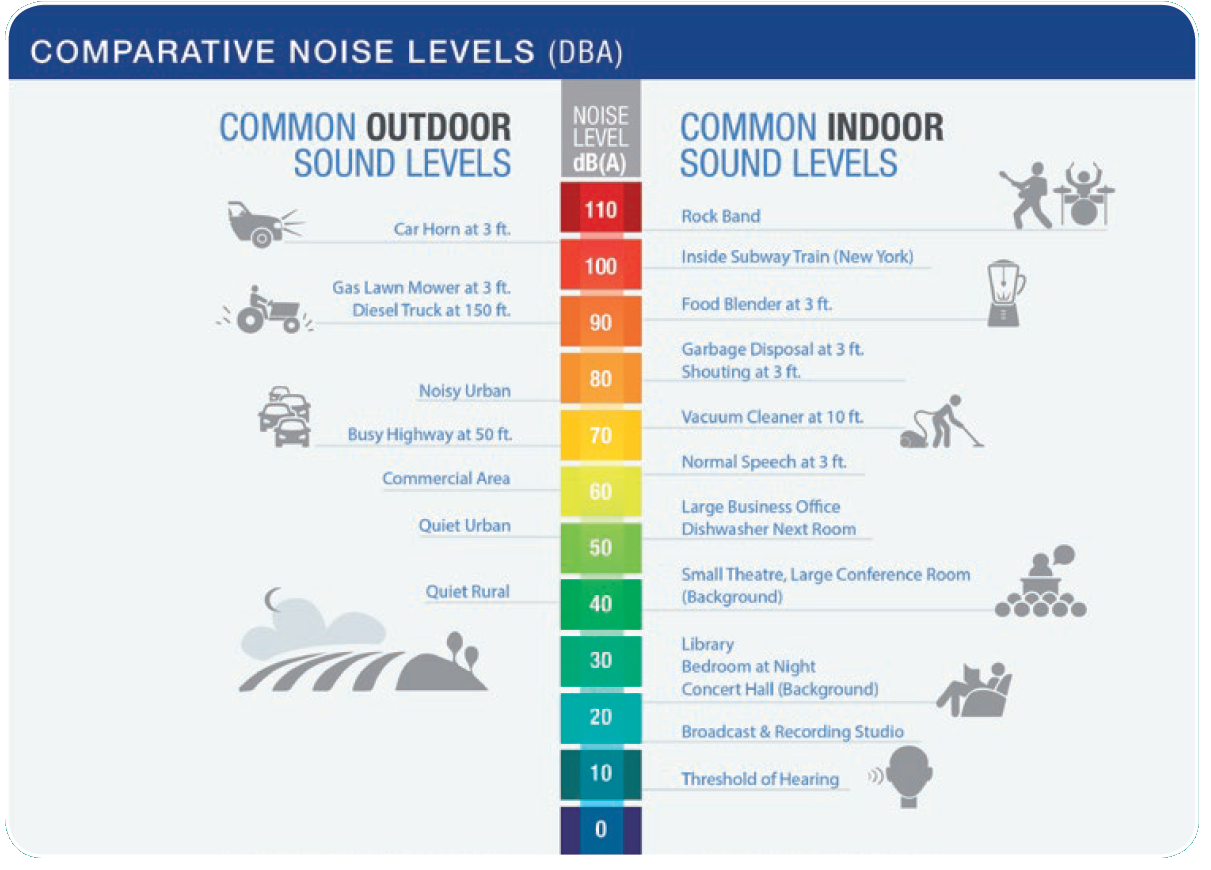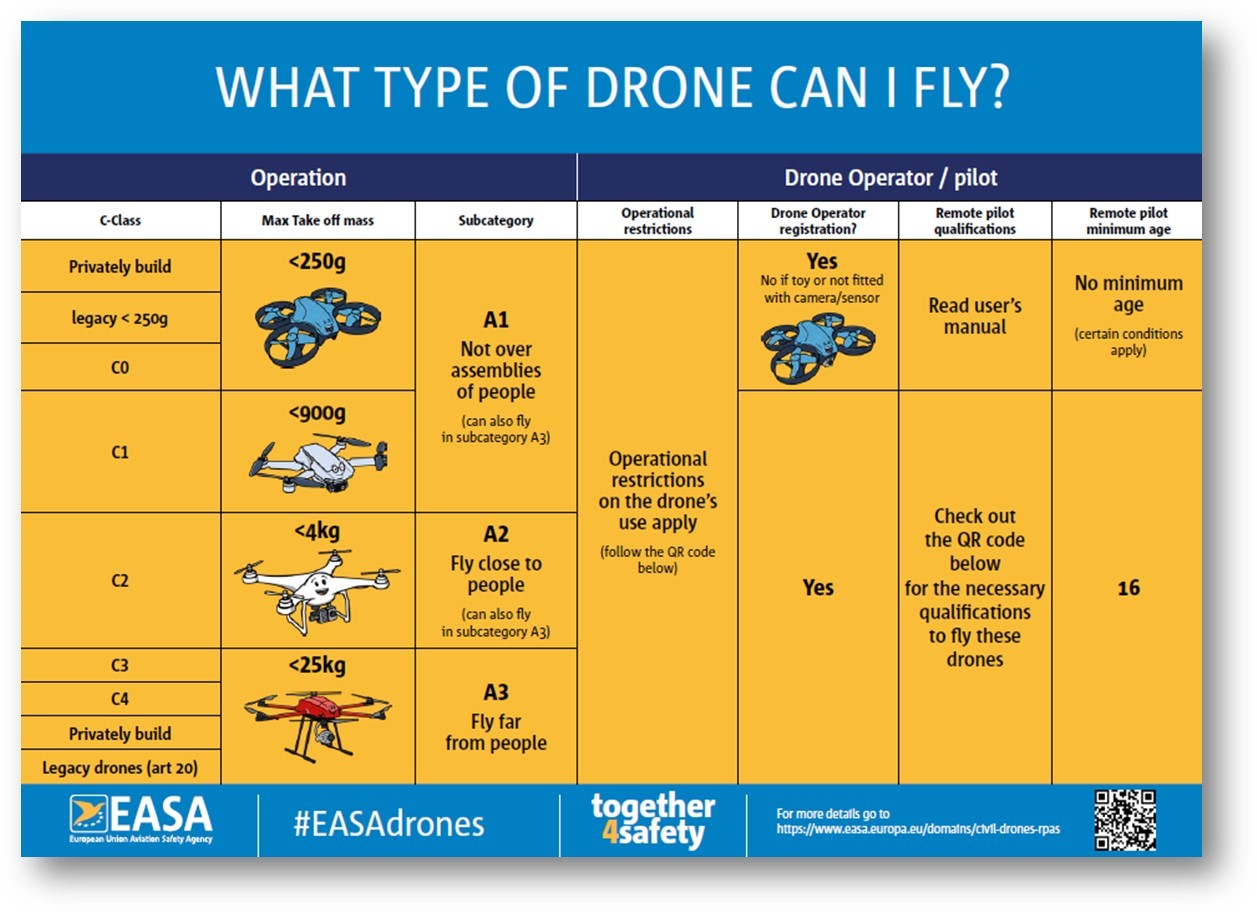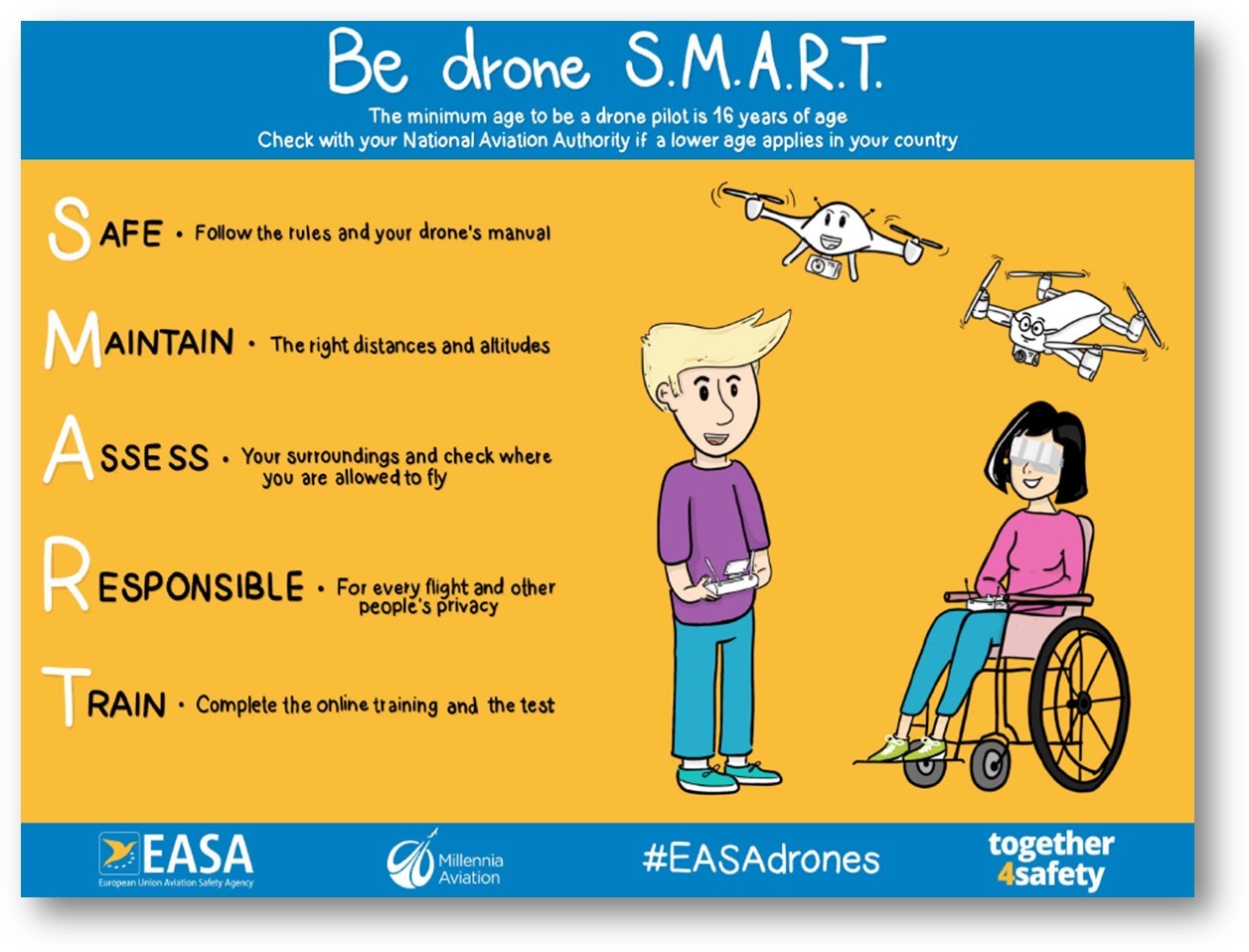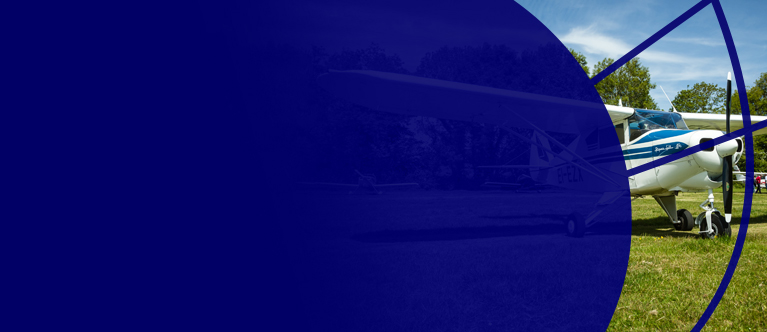Regulation
European aviation safety regulation details the process to allow Unmanned Aircraft Systems (UAS), commonly known as drones, to operate within the European Union, which the Irish Aviation Authority (IAA), as the Competent Authority, applies within the State. The oversight and regulation of UAS operations is risk-based. This means that the more complex the operation, the more restrictions and safety mitigations are required, to ensure the safety of the public. UAS operations are broken into three broad categories of ‘open’, ‘specific’, and ‘certified’ in increasing complexity.
Open
In the ‘open’ category, operators must maintain Visual Line-Of-Sight (VLOS) of their drone, and stay below 120m (400’). Certain distances from people must be maintained dependant on the size of the drone. [See chart below].
Specific
UAS operations in the ‘specific’ category, require an explicit authorisation from the Authority. This type of authorisation is recognised in all European Union Member States. To obtain an operational authorisation, an operator must provide a comprehensive safety portfolio which includes assessing and addressing both ground and air risks with appropriate mitigations. These might include, for example, coordination with Air Traffic Control, fitting the UAS with a parachute and flight termination system, and/or geofencing densely populated locations. Privacy, noise, and environmental issues are also addressed in the EU Regulation. The European Authority for Aviation Safety (EASA) has an ‘Easy Access Rules’ guide to UAS on their website.
Certified
The most complex category is ‘Certified’ UAS operations, which include for example international cargo drones. These are regulated in a similar manner to manned aviation, requiring a full Air Operators Certificate, Certificate of Airworthiness, Remote Pilot’s Licence, etc.
Registration
To operate a drone, except for toys, an operator must register with the IAA, clearly display their registration number on the drone, and upload it onto the drone’s Direct Remote ID (DRI).
The DRI broadcasts:
- Registration number,
- Serial number,
- Drone location,
- Drone height,
- Route,
- Ground speed,
- Remote pilot location or, if not available, the take-off point, and
- an indication of the emergency status of the drone.
This information can be scanned by mobile device, by anyone in range, using several freely available apps such as Dronetag. This information can then be used, if necessary, to report an occurrence to the Authority.
Reporting
Members of the public should report safety concerns using the European Aviation Safety Reporting Portal. See Safety Reports by Members of the Public for more information.
Remote Pilot Training
Depending on the complexity of the operation increasing levels of remote pilot training is required before flying a drone. [See chart below].
Noise
Regarding noise, the Authority continue to work with both EASA and other member States in developing guidelines and regulation around noise. Currently, all CE marked drones have specific noise limitations. E.G. a C1 (<900g) UAS, such as the DJI Air 3, is 85 db. In comparison the national noise limit on car exhausts is 99 db.[See chart below].

Privacy
With respect to UAS operations and privacy, it is protected under the General Data Protection Regulation, Reg (EU) 2016/679 and national legislation. The Data Protection Commission have also published Guidance on the Use of Drones. Essentially, a camera on UA is treated in much the same was as a phone, doorbell, or dashcam camera. Operators should respect a person’s reasonable expectation to privacy.
UAS Geographical Zones
Reg (EU) 2019/947 allows for the establishment of UAS geographical zones for safety, security, privacy, or environmental reasons. A number of these already exist for safety and security reasons, for example around airports and prisons. “Various entities (e.g. public institutions, law enforcement authorities, ANSPs, local authorities, nature park authorities, the military, etc.) may initiate the identification of UAS geographical zones”. This could be used to restrict UAS operations based on privacy, or to specified environmental conditions, including maximum noise levels.
Policy
The Department of Transport are developing a Policy Framework for Unmanned Aircraft Systems. Consultation ended 08th March.
Oversight and Enforcement
The Authority conducts risk-based oversight of all UAS operations in the State. In addition, Reg (EU) 376/2014 requires the Authority, as Competent Authority, to classify and analyse all mandatory and voluntary occurrence reports, sharing safety information with EC/EASA, other EU member States, regulated entities and the public. The Authority are also subject to the strict data protection and use provisions contained in the regulations. Notwithstanding the regulatory framework the IAA applies the following principles in respect of all occurrence reports:
- The Authority values all safety occurrence reports equally, whether they are reported under the regulatory framework (mandatory or voluntary) or whether they are reported outside the regulatory framework.
- All occurrence reports are subject to initial risk assessment and the level of investigation the Authority performs on individual occurrence reports is based on that assessment (the higher the risk the greater the concern).
- The Authority is fully supportive of, and will abide by, the principles of just culture and data protection enshrined in the regulatory framework.
- The Authority will take a balanced view in its investigation of reports received from individuals, where such reports concern perceived actions, or inaction, by the organisation within which the individual works.
Where appropriate, under the principals of Just Culture, the Authority can initiate several enforcement actions up to and including the detention of drones that do not meet the legal and safety requirements, or if deemed warranted, summary proceedings may be taken by the Authority by lodging a summons in the appropriate District Court or initiating indictment proceeding with the Director of Public Prosecutions. The Authority have brought a number of successful prosecutions against UAS operators in the past.
Planning
Planning regulation is outside the scope of the IAA.




